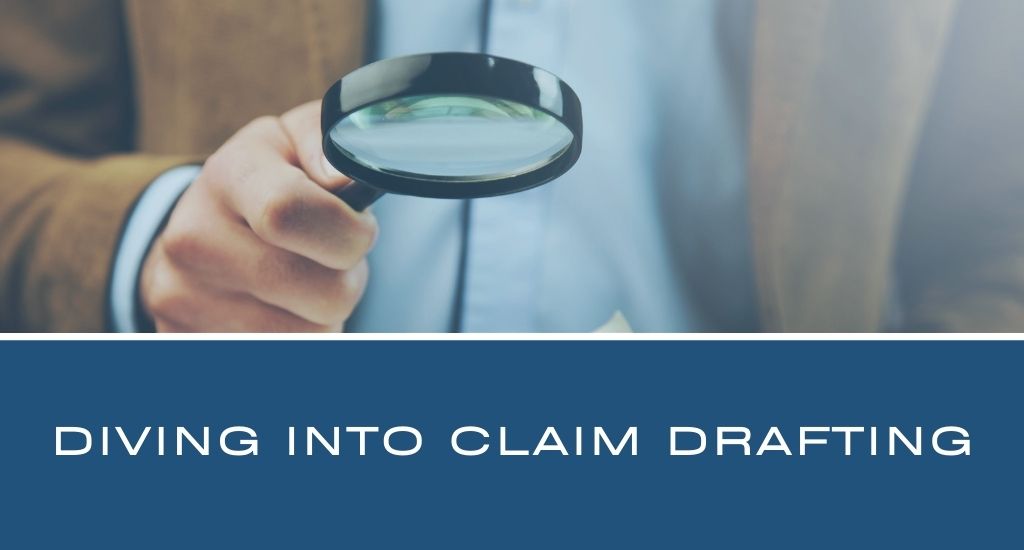Diving into Claim Drafting
- August 29, 2021
- Posted by: mbipuser
- Category: Latest article

Claims are single sentence descriptions of an invention that clearly establish the parameters and limits of what can infringe on a given patent. All non-provisional applications, including design applications, must have claims. There are two types of claims: independent and dependent. A dependent claim refers to a previous claim, by further limiting it. By default, each utility application allows for three independent claims and twenty claims total, which include both independent and dependent claims. For each claim exceeding one of these limits, there is a respective additional claim fee.
There are also multiple dependent claims, which are claims that refer to multiple claims in the alternative. Multiple dependent claims count as several claims equal to the number of claims from which they depend.
Claims are interpreted under a different light, depending on the situation. During prosecution, claims are interpreted under the broadest reasonable interpretation. Each term in the claim is given its plain meaning as would be understood by a person having ordinary skill in the art (PHOSITA), unless that meaning is inconsistent with the specification. During litigation, however, claims are construed according to their ordinary and customary meaning. Depending on the term, the meaning under the broadest reasonable interpretation may be the same as or broader than the ordinary and customary meaning. Claim terms must be clear enough that a PHOSITA can understand the scope of the claim.
There are also claims that can recite a group of possible alternatives to be selected from, called Markush groupings. The requirements of Markush groupings are that the group must be closed, and that the members must share both a single structural similarity and a common use. The broadest reasonable interpretation for claim features reciting a Markush grouping is any one of the members.
Applicants should strongly consider drafting each claim to cover activities performed by a single entity since, in practice, claims which involve activities that are usually performed by different entities are less valuable and do not add as much value to a patent as claims reciting activities from a single perspective. During litigation, when there are multiple entities, it is harder to prove infringement. When the claim stems from a single perspective, it allows for showing of direct infringement, whereas if from multiple perspectives, it may require a showing of indirect infringement.
